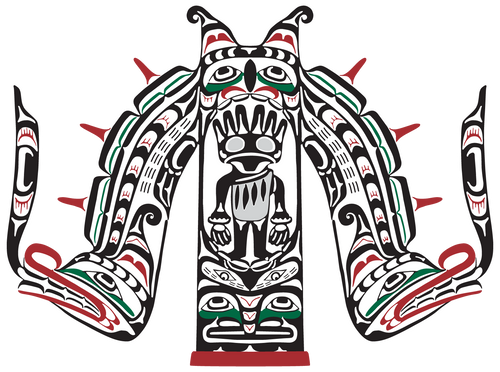Print - Oceans of Wealth
Signed, limited edition
You can often see these robes in movement in our Big Houses. They are garments meant to be worn and meant to be used. Covered with appliqué, buttons and beads to show the crests of the wearer, they are meant to tell a story and are meant to tell where a person is from. As the dancers move, they flow like waves upon an ocean of wealth.
My ancestry is mixed and I make no effort to neither hide nor deny it--it is part of who I am. My genetic makeup largely comes from England, from Norway, from the Pentlatch and from the Kwaguł and the ‘Na̱mg̱is of the Kwakwaka’wakw. Some of my ancestors fought in the War of the Roses, the War of Independence and the American Civil War. Some were literally Kings and Queens of England, while many many more were peasants trying to find a way to survive. Many were nobility amongst our people here and some were even slaves. I have a very rich history and as I think back in time, my mind becomes lost in these oceans of wealth.
When the first Europeans set foot on these territories, they were confronted with a rich and complex economic system centered on the potlatch. Interest-bearing loans were a regular and frequent activity amongst my ancestors. Shield-like items--called “t̕łaḵwa”--made from native copper were used to build up wealth. The “copper” was composed of three main parts: the “u’gwa̱mi” (upper part or face), the ”ga’lasi” (crosspiece, backbone or T) and the “uxsti” (lower sides or ribs). When a chief wished to insult his rivals, he would break a corner off his copper and present the broken segment to his enemy. The onus would be on the rival to return a piece of equal or greater value in order to save face. Coppers used in many quarrels would only have the T-shaped backbone remaining to represent its role in the oceans of wealth.
-Andy Everson
17" x 22"



